residues of wetness
welcome to a digital work-in-progress space inhabited by art and research practitioners who share an interest in interdisciplinary work around watery spaces and who were part of the Ocean as Archive seminar at Goldsmiths 2019/20.
residues of wetness operates as an archive of collective thinking with and about water where you can find traces of our ideas together with the images, videos, sounds, and quotes that inspire us.
how does the ocean become a material witness?
after bodies has been thrown into water, sodium is all that is left
how does time act as a factor during your walk?
describe the environment that you see in front of you
what is the role of dreams in this environment?
what animals and human behaviour do you observe?
storm
logistics
residues
aquatic creatures
underwater networks
The Black body is signed as physically and psychically open space, almost always in the Diaspora. A space not simply owned by those who embody it but constructed and occupied by other embodiments. Inhabiting it is a domestic, hemispheric pastime, a transatlantic pastime, an international pastime.
Dionne Brand, A Map to the Door of No Return
Since techniques to mediate ourselves in the water are mostly inaccessible to us, human species, I wonder what type of experience out of these two allows us to gain more knowledge about staying with the aquatic: to engage with its “civilised” form but still physically explore its materiality or to go down to its bottom on a submarine yet only observe it through the thickness of the porthole glass?
field trip research project
What did I see? It was as if the ground and the building were there, but as if they were... not solid, insubstantial. There was... this immense space of hollow tentacles... [pause] ... tube-tentacles... and they had coloured lights - or creatures made of light - moving through them, pulsing through them. And some of them had... openings at the end. Like mouths, like... interfaces. There was a tentacle that went through the building and had an opening by the stairs, off twenty feet away to my right. There were creatures coming through it, then hovering away, like birds, or huge brightly coloured moths, moth creatures.
from my trip to Venice, mid November 2019
If there is any agreement about climate change, it is that our planetary future is becoming more oceanic. Scientific discourse has positioned the ocean as evolutionary origin for life on earth and, given the imminent threat of sea level rise, our anticipated destiny. Sea level rise is perhaps our greatest sign of planetary change, connecting the activity of the earth's poles with the rest of the terrestrial world, producing a new sense of planetary scale and interconnectedness through the rising of a world ocean.
from Elizabeth DeLoughrey, "Ordinary Futures. Interspecies Worldings in the Anthropocene", p. 353
They say aquatic animals don’t need technologies, only techniques to stay with their medium - water. Like Epischura baikalensis, an endemic species of copepod, who spends its lifetime filtering the water of the Lake Baikal, consuming bacterias and algae of one-cell size and thereby making the lake clean. I interpret this activity of a tiny crayfish as doing good to their medium. But, apparently, the species is not aware of the positive outcome they bring to the aquatic cycle they’re part of.

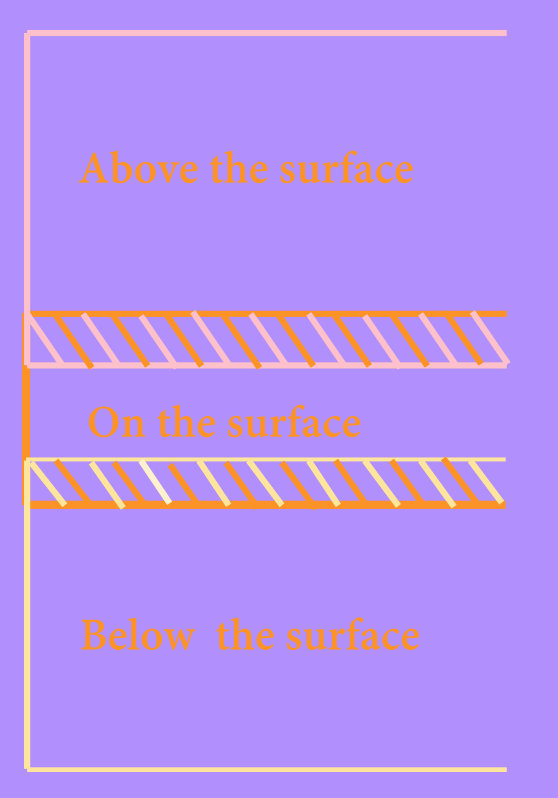
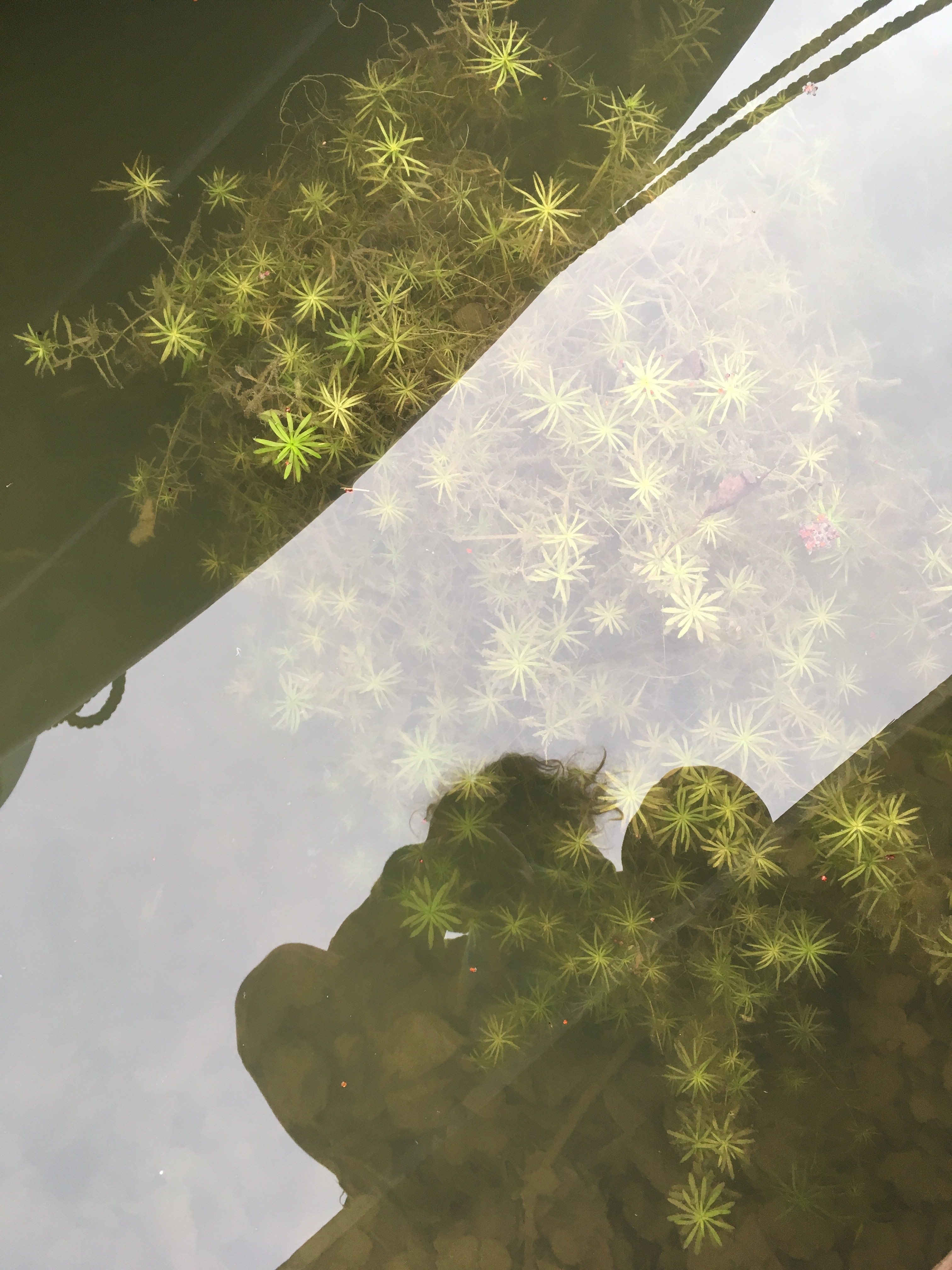
Sailors aboard ships of exploration kept detailed journals to illustrate their daily endeavours. Such accounts included scientific information as well as weather descriptions, personal observations and sketches. Even though this journal depicts life on a body of water, it hardly bears any resemblance to the seafarers’ exciting voyages. Notwithstanding the cruiser licence, narrowboats tend to be considerably more of a stationary experience, concerned with towpaths rather than currents. Long have passed the times of the great unknown, especially for a city based boater in the capital of England.
This creative journal is my attempt to portray the specifics of living on the canal, through a collage of written and visual work documented over the last year. It is in equal parts practical boating knowledge as well as personal thoughts, often seemingly off-topic. The notes dwell on the granular day to day life that works away from the romance of living on the water. Each entry constitutes a reflection on course readings, however not all are directly related with the weekly themes.
SEE THIS JOURNAL
'These sounds, I find, vitally contribute to a feeling of immersion. Submerging into the sea merges with a sense of submerging into a burbling, reverberating soundscape.'
'These sounds, I find, vitally contribute to a feeling of immersion. Submerging into the sea merges with a sense of submerging into a burbling, reverberating soundscape.'
You have2write a creative journal
(...)
2.)
When you start out the ocean is not so abstract or in excess of proportion to your human existence. Day one involves a lot of pressing OK. When I picked this module I was running away from art historicism and the ocean seemed wildly un-inscribable and anti testimonial, but now it has accumulated ideas to a measure which obscures it altogether, and there’s just me and my ADHD.
You write during the interludes, which is perfect because your thoughts are never fully formed.
After a while you inevitably forget about the ocean, especially once they throw in the notion of a menagerie and the donation process becomes streamlined. You might spend a lot of time designing an allotment. This isn’t exactly the dream of productivity —imagine thinking this isn't life but university credentials are—? When we're talking unlivability we mean this, as well as that it’s good to be humble about executive function.
You're aging on the loading screen, but I am getting ahead of myself. Consider the weather. You can tell what season you're in if you don't make the assumption you’re looking at some generic prompt. You know you’re on water because your expectant oblivion syncs to what looks like a palm tree's buoyant, exalted root ball, and is, in fact, the island. Ontologically this would constitute promised land, but, using what we have, it is rather the promise of land, i.e., a topographical belvedere of the ocean.
At night I'm its historian but whilst the sun is up the kids are awake and the proximity of the ocean in all of it is merely contingent. To die you must forget you're living.
Once you have room to dissociate you reminisce of the smallest details of your very short life on earth and that is the best feeling—aesthetics could never.
Aesthetics won't fathom the forest of labour relations for the vibes, a record some form thereof hereby undertaken in consideration of student number 33612693.
3.)
I have never seen the ocean, although I had assumed that looking out the coast from Wales was topographically it (the Atlantic) —it was not.
(...)
body as ocean/ocean as body/body as ocean… statement
Inspired by Astrida Neimanis’ theory on Hydrofeminism—everything being fluid and interconnected—as well as writer Kathy Acker’s argument that ‘You can make, but you don’t create’, this creative journal sets out to explore bodies, oceans, feminism, and fluidity without writing a single word. Rather, this journal is an assemblage of excerpts from academic texts, fictional writing, interviews, music lyrics, artworks, and films. Woven together, these excerpts make up new stories of the ocean as archive - stories told under 16 different headings, including an introduction and an outro. This journal is a remix and a montage.
Astrida Neimanis and Kathy Acker both propose feminist narratives of “creation” and connection. Such narratives are crucial when considering the fluidity of ocean and body. Neimanis’ theoretical work is the key inspiration for the content of this journal, whereas Acker’s fictional writing provides the point of departure for the form.
Neimanis is a scholar in Gender and Cultural Studies. Her most famous work, Hydrofeminism: Or, On Becoming a Body of Water, is a text that ties together the world and its bodies through water. This is not to say that everything is the same, but that it is all entangled. Water as a connecting material is not an idea unique to Neimanis; similar thoughts have been introduced approximately 2500 years ago in the ancient Chinese philosophy of Taoism, and it is a scientific fact that Earth consists of 71 % water and human bodies of 57-78 %—to name just a few other examples. Hydrofeminism is a political and philosophical concept that brings forth watery entanglements in a time and place of atomisation and ecological despair.
Entanglement is a key aspect in Kathy Acker’s work. Her statement, ‘You can make, but you don’t create’, is a feminist critique of the limits of “creation”, pointing to the deceiving, masculine boundaries drawn around and between works of art. This critique can be extended to include the fictional boundaries between every object, including bodies. Acker was a writer at large and known to “plagiarise” classic literature such as Don Quixote and Charles Dickens’ Great Expectations. She would combine and rewrite excerpts from different texts, and in the case of the two works mentioned above, appropriate the title for her own books. Taking her model to an extreme, this journal is only made up of other people’s writing and images.
The journal includes material from the syllabus of the module Ocean as Archive; the book Marine Lover of Frederich Nietzsche by Luce Irigaray; and extra curricular material that I have engaged with parallelly to undertaking the module, including the writings of Neimanis and Acker.
13 of the 16 chapters are made in response to 14 of the 15 weeks in the syllabus. I decided to leave out one week—week five on Pirates—as the texts did not resonate with the rest of the journal and the overall theme of bodies and oceans. Moreover, none of the Pirate texts were particularly engaging to me. Two of the weeks—week 12 on Underwater Networks and week 19 on Soundings—are combined into one chapter. These weeks's texts were profoundly thematically overlapping, and to merge two weeks seemed only appropriate for a chapter on Entanglement. To the 13 chapters, I’ve added an Introduction focused around Acker’s division between making and creating; a chapter on Virus which felt obligatory in a time of a global pandemic; and an Outro, the lyrics of the French ballad La Mer which seems like the kind of song you would play at the end of a depressing documentary or an intense techno set when the lights are turned on. A sort of comic relief which takes off the edge and simultaneously underlines the intensity of what came before.
Pieces of text and images flow in and out of each other in the journal which can be read as one text, in chapters, or in separate paragraphs. Each chapter is given a headline, different from the original theme of the week. The number of the week can be found in the footnotes where it guides those who are aware of the structure of the module without disturbing those who are not. The order of the journal started out mirroring that of the module, but soon rearranged itself as a result of disruptions, including the strikes and the lockdown, as well as my own interest and curiosity.
The chosen medium for my journal is a zine. The word zine derives from ‘magazine’, and is a short, DIY publication. In order not to disrupt the flow of the journal, to let the material come together to make something new, and to honour the medium of the zine, no one is referenced within the journal itself. However, for the sake of crediting writers, artists, and other makers accordingly, a full list of the used content is provided at the end of this statement. The medium of the zine allows for both unorthodox content and set up as in the case of this journal where the material is plagiarised; there is no author; the spacing between paragraphs changes; genres are mixed; and ends are left open.
Bibliography, statement:
Acker, Kathy. 1999 A Few Notes on Two of My Books. The Free Library (September, 22), https://www.thefreelibrary.com/A Few Notes on Two of My Books.-a059410488 (accessed January 20 2020)
Latour, Bruno., and Catherine Porter. We Have Never Been Modern. Cambridge, Mass.: Harvard University Press, 1993.
Neimanis, Astrida. “Hydrofeminism: Or, On Becoming a Body of Water.” In Undutiful Daughters: New Directions in Feminist Thought and Pratice, edited by Gunkel, Nigianni, Söderbäck, pp. 85-99. New York: Palgrave Macmillan, 2012.
Le Guin, Ursula K., and Jerome P. Seaton. Lao Tzu : Tao Te Ching : A Book about the Way and the Power of the Way. Boulder: Shambhala, 1998.
Take it away, 2018
A collaborative work by Kazakhstani artists Anvar Musrepov, Nazira Karimova, Arman Sein. A sound installation where we can see Almatinka river in Almaty, Kazakhstan, and hear sounds of the river. We can hear conversations between the artists. They share intimate stories of their childhood and insecurities about their body, gender, and perception in life. The water will cleanse them of their pain and vulnerabilities that they have lived through. Water is sensuous; it has healing properties.
Please click on the image to see the full video.
When we think about water as a substance and what important role in plays in our human lives, it could be best described by Astrida Neimanis. “Changing how we think about bodies means changing how we think about water. ‘Water’ constitutes one of the so-called Anthropocene’s most urgent, visceral, and ethically fraught sites of political praxis and theoretical inquiry. Our reshaping of this planet is occurring not least through the rechoreography and rematerialisation of its waters: ancient aquifers are being rapidly depleted; rivers that once ran fast are now exhausted before they reach the sea; dams, canals, and diversions undermine many vital waterways. Art, too, might be a body of water that we can attune our bodies to, and describe. Water has a history, a substance, but it is also an idea.
What constitutes water? How can we imagine watery spaces?
SOON IT WOULD BE TOO HOT
(ch. one, JG Ballard, Drowned World)
"... logistics discovers too late that the sea has no back door". What does it mean?
"amphibious mode of production"
how we become a residue & go back to the environment (?)
what resident time is when water is not one substance?
(from the discussion of "Excelente Zona Social" by Michael T. Taussig)
the idea of space as
ephemeral and relational
"To understand media, we should start not on land but at sea."
John Durham Peters
"Language and culture become analogized to water."
Stefan Helmreich
beck
brook
channel
cloud
crystals
current
deep sea
delta
downstream
dump
flow
fluvial
fog
freshwater
humidity
ice
lagoon
liquid
liquidity
marine
ocean
oceanic
oceanside
open sea
open water
pelagic
pond
river
sea
sea level
seascape
seashore
seaside
spring
strait
stream
thalassic
thundersnow
tidal
tide
undercurrents
upstream
watery
waves
wet
wetness
Life can be regarded as drops of specialized seawater. Our brains float in cerebrospinal fluid, nourished and sustained against gravity, and mammal embryos grow in the oceanic environment of the amniotic sac.
Peters, 'Of Cetaceans and Ships; or, The Moorings of Our Being'
where does the ocean end
and the sea begin?
we do not seek to produce answers and definitive statements, instead we search for entanglements, fluidities and discontinuities that challenge our aquatic imagination.
our first meeting is on sunday 6th december, 4pm gmt
follow this link to join us https://www.facebook.com/events/311510546563091
"A dangerous thing. What do you know of the sea?"
Doro in Octavia Butler, Wild Seed
we followed the river outside the city
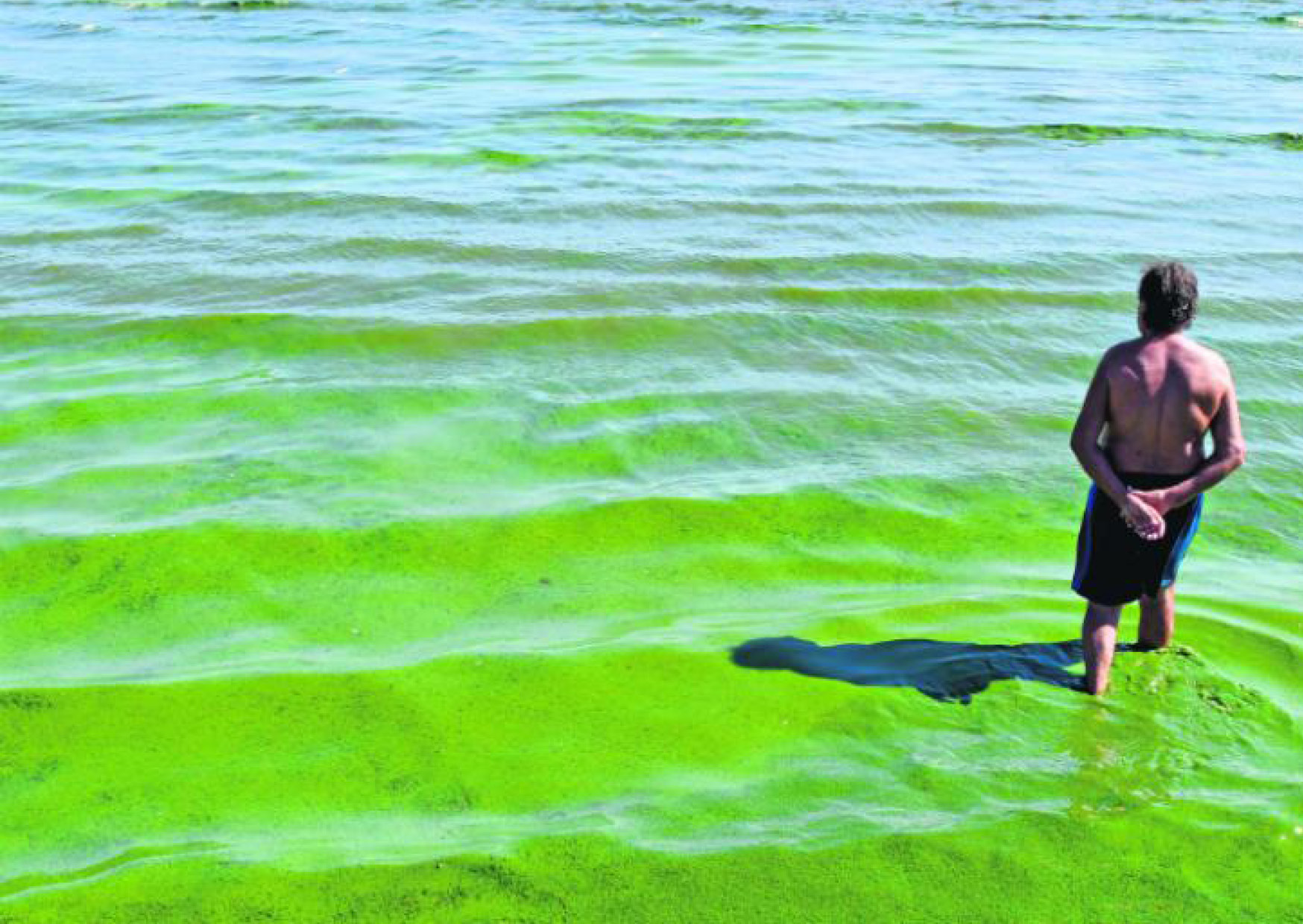
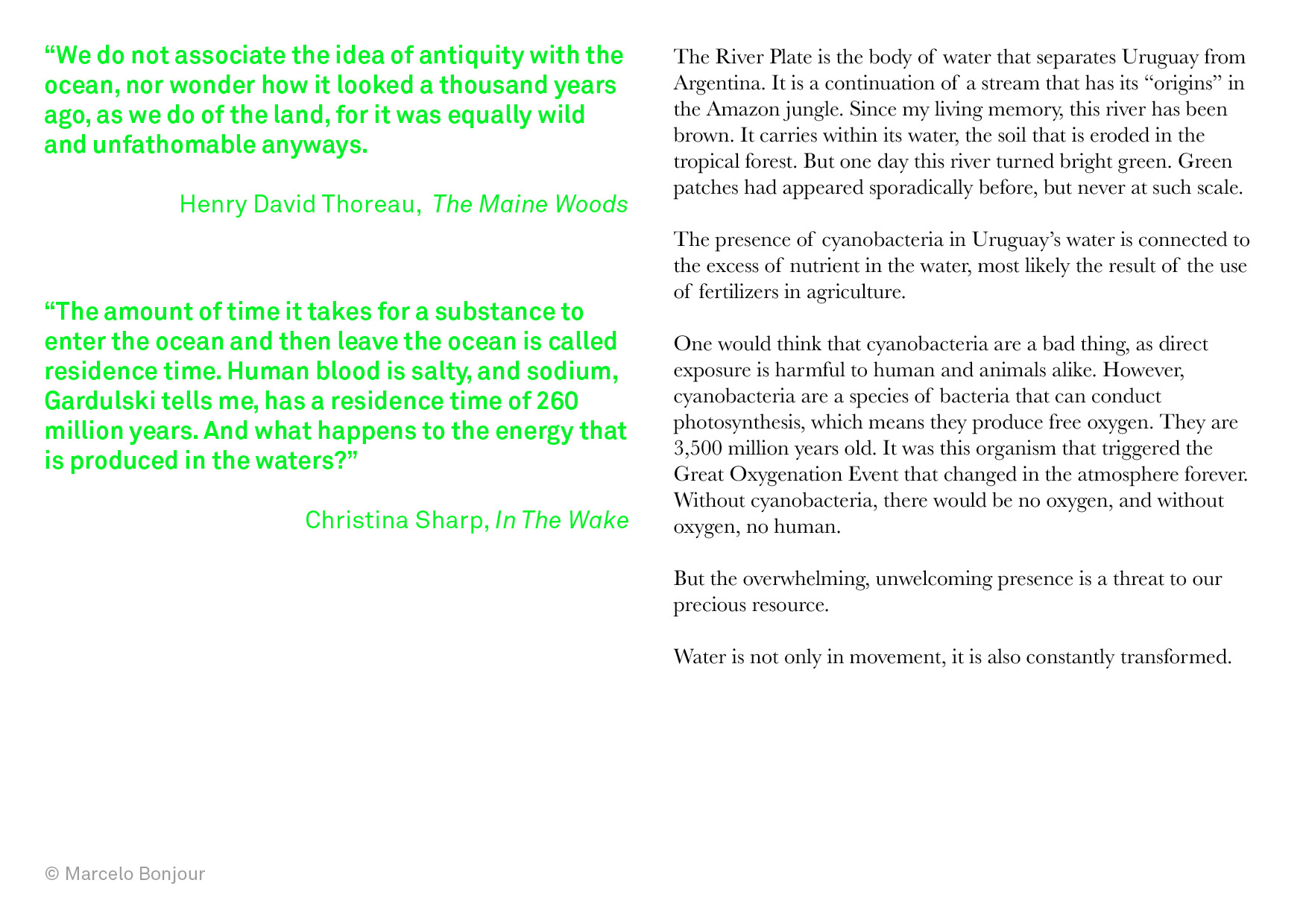
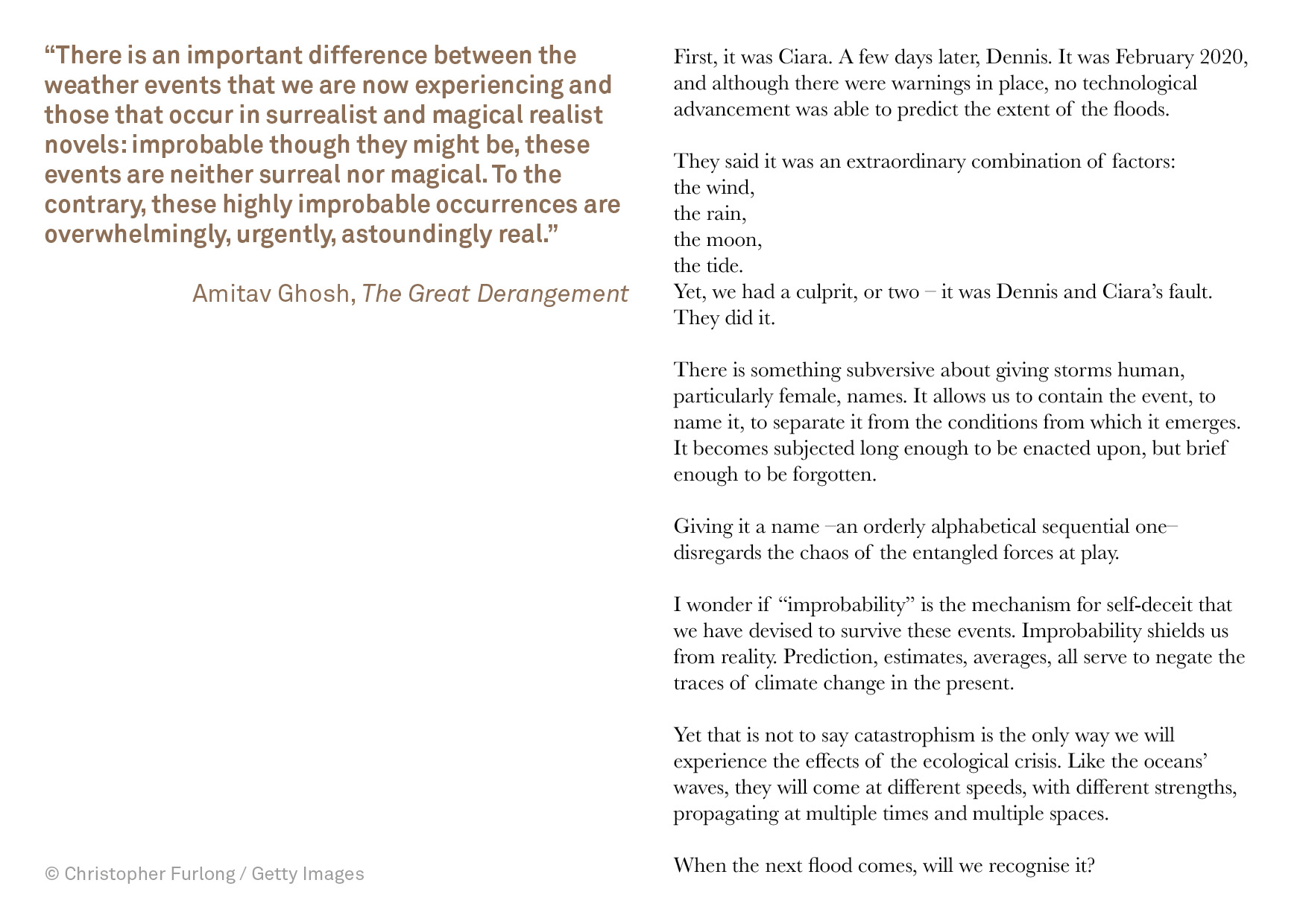
After many more scorching days and sleepless nights drifting and alone, we had begun to prepare for the end of our journey. The same waters that had finally invaded our home had carried us away from it, far north, until the sun no longer dipped below the edge of the earth, bobbing instead just above the silver horizon. Together we had watched another swooping sunsetrise, knowing that we’d never again see the sky cloaked by night. Would those others who had left before us see the night? Would those we left behind escape?
It had seemed to happen overnight. The sun had lashed out in an act of great fury, violently striking us from far out in space until we had felt the air between us explode. We had seen the skies split open and we had screamed and cried and danced and laughed.
In the beginning it had been beautiful.
Some had said it was judgement, that we had angered the sun and that we could no longer live as we had, and they fled early across the land. It was madness to stay, they had said. But we had stayed, long enough for the waters to come and take us, and they had taken us.
For a while we were not alone in our journey. Others travelled alongside us in the water and we had peered down and had seen the lights of cities dancing beneath the surface. Now though, we were finally alone and the orange disc of the sun ran downwards, outwards, upwards, and we were inside it.
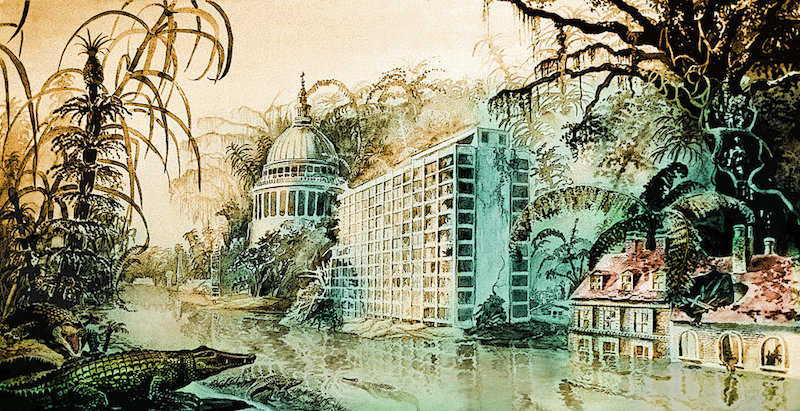
Electricity is the eye, water is the life […] In a way, electricity reach the high peak. The studio must be like a living thing. The machine must be live and intelligent. Then l put my mind into the machine by sending it through the controls and the knobs or into the jack panel. The jack panel is the brain itself, so you’ve got to patch up the brain and make the brain a living man, but the brain can take what you’re sending into it and live. Think of music as life. When I making music I think of life, creating life, and I want it to live, I want it to feel good and taste good.
— Lee "Scratch" Perry
be flexible.
(deep in the ocean there is pressure. a lot of pressure. it will press on your chest and your lungs will collapse. you call it heartbreak. it is not. it is how what made you embraces you. reshapes you. welcomes you back. let it happen.)
— Alexis Pauline Gumbs, 'Solstice Deapth: Guidance from Mile Deep Diving Whales'
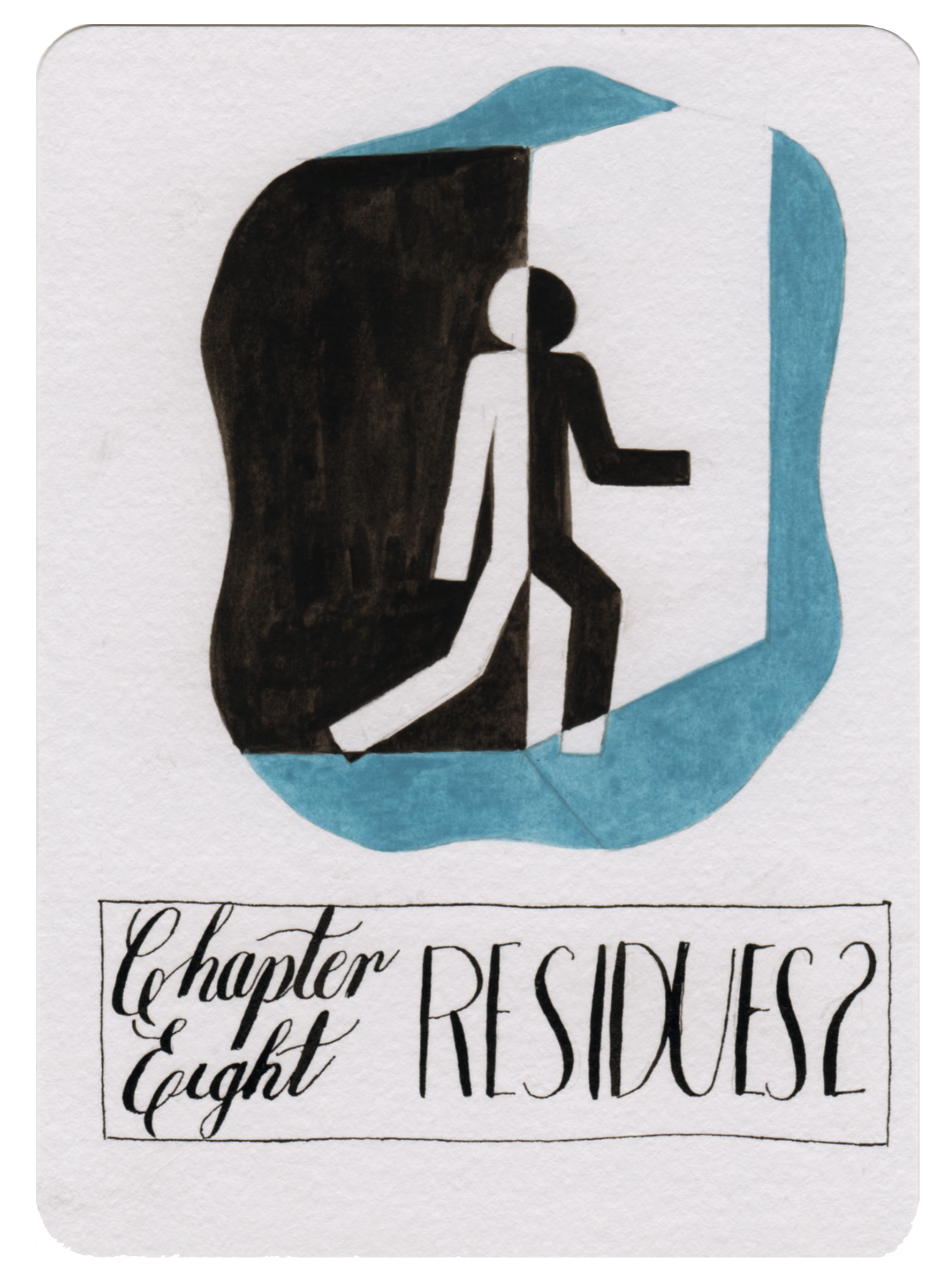
Chapter 8
Residues 2
WEDNESDAY 8TH JANUARY
DEAR SYCORAX,
CONTINUING WITH THE NOTION OF RESIDUE, AS I THINK OF HUMAN RESIDUE, I SEE IT AS A WAY OF BEARING WITNESS TO OUR EXISTENCE ON THIS PLANET AND HOW WE BECOME PART OF OUR ENVIRONMENT. THE RESIDUE WE LEAVE BEHIND DESCRIBES THE KIND OF ENVIRONMENT WE LIVE IN. IT CAN ALSO DESCRIBE WHAT WE EXPERIENCE IN THE WORLD. HOWEVER, WE ALL HAVE OUR OWN EXPERIENCES: THERE IS A PHILOSOPHER, FAULKNER, WHO DISCUSSES THE NOTION OF MULTIPLE REALITIES – ‘WHEREBY EACH PERSON SEES THE SAME THING DIFFERENTLY’. AND THIS IS WHERE STORIES ARE FORMED. EACH STORY BEING VALID AS EACH EXPERIENCE IS VALID. FOR INDIGENOUS PEOPLE, THE STORY HAS NEVER BEEN MORE IMPORTANT – BECAUSE HERE IS WHERE THE UNHEARD VOICE LIES. HERE IS WHERE THE REALITIES OF THE PEOPLE WHO ARE MARGINALISED ARE TOLD. IN THAT SENSE STORYTELLING HAS THE POWER TO CHANGE THE WORLD THROUGH THE USE OF LANGUAGE AND WORDS. OR BY LISTENING TO OTHERS STORIES RATHER THAN JUST OURS, WE CAN LEARN TO LIVE TWO MULTIPLE STORIES – LEARN TO UNDERSTAND OTHERS. THIS KNOWLEDGE IS WHAT PERHAPS PROPELS US TO CHANGE THE WORLD.
IN MY READINGS, I HAVE COME TO UNDERSTAND THAT A PERSON CAN HAVE MULTIPLE STORIES, ESPECIALLY WHEN MULTIPLE ENVIRONMENTS ARE EXPERIENCED AND LIVED IN. AT TIMES, IT IS POSSIBLE TO HAVE AN EMOTIONAL YEARNING FOR AN ‘OTHER’ PLACE OR TERRITORY, EVEN THOUGH THERE IS NO EXPERIENCE OF THAT TERRITORY, OR HAVE A FRAUGHT EXPERIENCE OF THAT TERRITORY. THIS IS SOMETHING THAT HAS HAPPENED THROUGHOUT HISTORY. IN MY TIME, SYCORAX, I HAVE SEEN PEOPLE MOVED OUT OF THEIR HOMES AS LAND IS FOUGHT OVER BY OTHER ETHNIC GROUPS OR AS LAND IS STOLEN BY BIG CORPORATIONS THAT TURN ONCE FRUITFUL AND BIO-DIVERSE LANDS INTO MONO-CROP PLANTATIONS. LOCAL RESOURCES ARE DEPLETED. COMMUNITIES ARE ENSLAVED IN THEIR NEW WAY OF LIFE. I KNOW, SYCORAX, YOUR LAND HAS BEEN STOLEN BY THE COLONIALISTS. YOUR TERRITORY AND LAND ONCE BASED ON SUSTAINABLE ‘USE VALUE’ WHERE THE CLOSENESS AND CARE FOR LAND WAS PARAMOUNT IS NOW BASED ON ‘COMMODITY VALUE.’ I UNDERSTAND NOW THAT THE JOY OF COTTON FARMING FOR USE OR THE GROWING OF INDIGO FOR USE HAS NOW TURNED INTO A BURDEN AND NONE OF THE YIELDS WILL EVER COME BACK TO YOU OR YOUR COMMUNITY. INSTEAD WHAT YOU FACE IS VIOLENCE AGAINST YOU AND YOUR PEOPLE AND YOUR LAND AND SEAS. BUT SYCORAX, THIS IS THE POWER OF WORDS – OF THE LETTERS AND JOURNALS I WRITE TO YOU AND THE LETTERS YOU WRITE TO ME. THIS IS WHY I SHARE WHAT I KNOW AS YOU SHARE WHAT YOU KNOW, WE CAN BOTH LIVE EACH OTHER’S REALITIES. WE CAN UNDERSTAND EACH OTHER.
SINCERELY,
EMMA
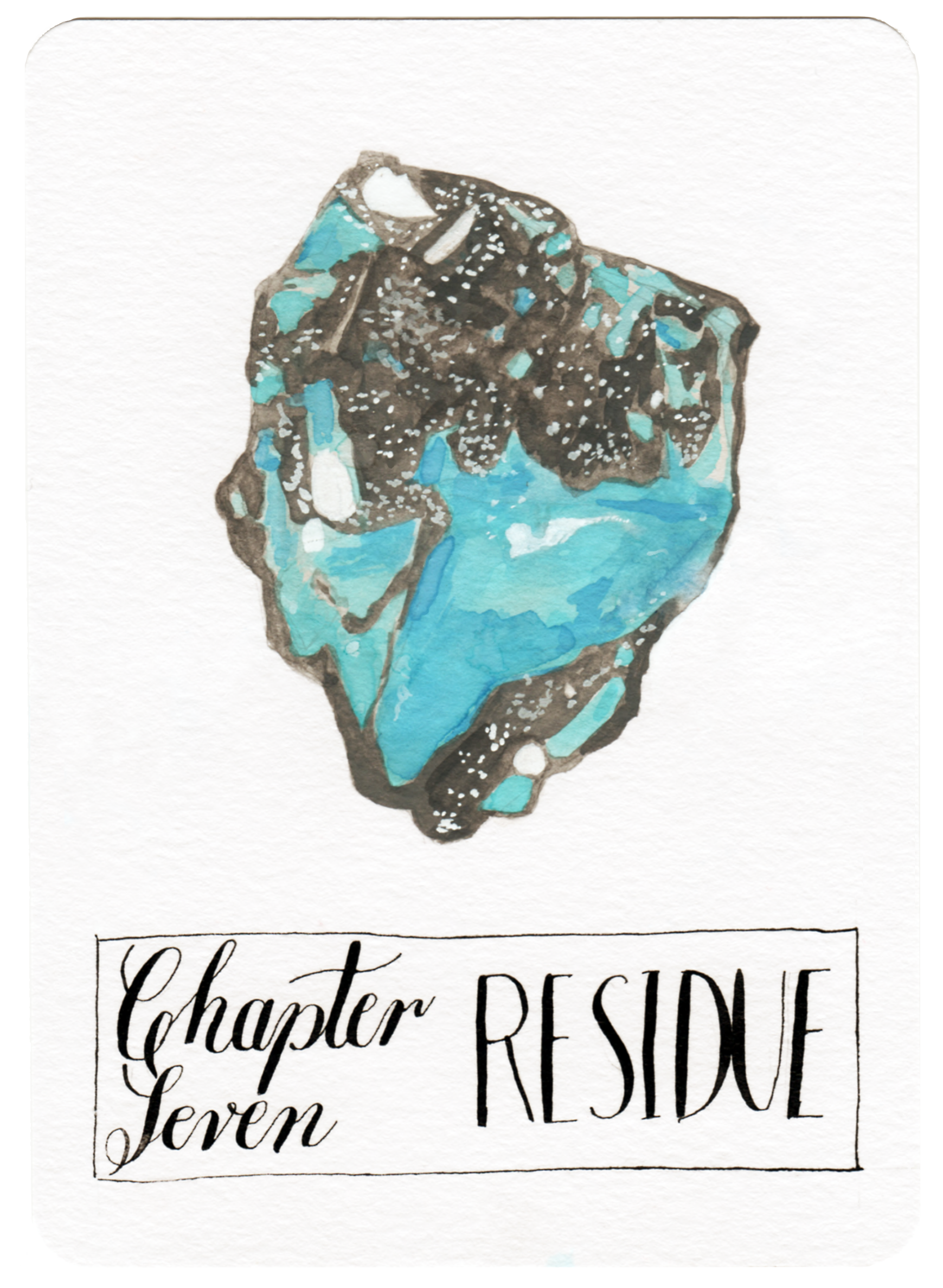
CHAPTER 7
Residues
WEDNESDAY 1ST JANUARY 2020
DEAR SYCORAX,
IN YOUR LAST LETTER, YOU SPOKE OF THE BODIES THAT WASHED UP ON THE LAND AND YOU SPOKE OF THE BABY YOU DELIVERED FROM THE WOMB OF ONE OF THE FEMALE BODIES. THOUGH YOUR ENCOUNTER WITH THESE BODIES CAN ONLY BE DESCRIBED AS VIOLENT, I FOUND IT HARD NOT TO RELATE, (IN A SYMBOLIC WAY) THE READINGS I AM SENDING TO YOU, TO THE WASHED-UP BODIES ON THE BEACH.
IN MY WORLD, WE HAVE A MATERIAL CALLED PLASTIC – A USEFUL MATERIAL BUT ALSO A DANGEROUS ONE FOR THE ENVIRONMENT. WE HAVE A LOT OF PLASTIC IN MY WORLD, MUCH OF IT NOT DISPOSED OF PROPERLY AND A LOT OF IT ENDING UP IN THE OCEAN. PLASTIC EVENTUALLY CHANGES ITS SHAPE AND COLOUR AND SIZE. THE SUN CAN BREAK IT DOWN INTO SMALLER PIECES. IT CAN BE MOVED BY THE WIND OR BY ANIMALS AND ALSO OCEAN CURRENTS. PLASTIC MOST ESPECIALLY IS CARRIED BY WATER AND A LOT OF IT WASHES UP ON THE BEACHES OR GATHERS UP IN CERTAIN PARTS OF THE SEA SUCH AS THE PACIFIC – ON THE OTHER SIDE OF THE CARIBBEAN. I KNOW THAT YOU LIVE ON THE BEACH, BY THE SEA.
BEACHES ARE MADE UP OF PARTICLES AND SEDIMENTS, ERODED FROM THE CORAL REEFS AND ROCKS OR WASHED UP FROM THE BOTTOM OF THE SEA. BEACHES ARE NOT SEDENTARY. THEY ARE ALSO TEMPORAL IN NATURE, AS WE FIND MANY ROCKS THAT DON’T ERODE AND HAVE EXISTED FOR MILLENNIA. IN THE READINGS I SENT YOU, IT DESCRIBES HOW THE PLASTIC THAT ENDS UP IN THE SEA GETS BROKEN UP INTO SMALLER PIECES AND BECOMES PART OF THE BEACH (IN THIS CASE, KAMILO BEACH IN HAWAII). IN THAT SENSE, THE PLASTIC LIKE THE SAND ON THE BEACHES IS TEMPORAL IN NATURE AND INDEED MOVES.
IT HAS MOVED THROUGH TIME – FROM THE EXTRACTION OF FOSSIL FUELS (BURIED COMBUSTIBLE ORGANIC MATTER FORMED FROM DECAYED PLANTS AND ANIMALS) TO THE PROCESSING INTO CRUDE OIL AND PETRO-CHEMICALS THAT FORM PLASTIC. THESE PLASTICS END UP IN OUR HOMES AND WORKPLACES AND WE DISPOSE OF MUCH OF IT TO END UP IN LAND FILL OR AT THE SIDE OF OUR ROADS. THE WIND BLOWS AND THE RAIN WASHES THE PLASTIC INTO OUR OCEANS. THE FISH EAT THE PLASTIC OR IT ENDS UP ON OUR BEACHES TO BE WASHED UP ON ANOTHER BEACH AS THE WATER EBBS AND FLOWS THROUGH TIME.
IT HAS MOVED THROUGH TIME – FROM THE EXTRACTION OF FOSSIL FUELS (BURIED COMBUSTIBLE ORGANIC MATTER FORMED FROM DECAYED PLANTS AND ANIMALS) TO THE PROCESSING INTO CRUDE OIL AND PETRO-CHEMICALS THAT FORM PLASTIC. THESE PLASTICS END UP IN OUR HOMES AND WORKPLACES AND WE DISPOSE OF MUCH OF IT TO END UP IN LAND FILL OR AT THE SIDE OF OUR ROADS. THE WIND BLOWS AND THE RAIN WASHES THE PLASTIC INTO OUR OCEANS. THE FISH EAT THE PLASTIC OR IT ENDS UP ON OUR BEACHES TO BE WASHED UP ON ANOTHER BEACH AS THE WATER EBBS AND FLOWS THROUGH TIME.
THIS IS OUR RESIDUE – IT IS WHAT WE HAVE LEFT BEHIND. IT IS THE RESIDUE OF OUR HISTORY THROUGH TIME AND ALSO SPACE. IT TELLS THE STORY OF OUR HUMANITY – OF OUR ACTIONS. IT IS ALSO THE RESIDUE OF OUR FUTURE – A HUMAN CREATED GEOLOGICAL EPOCH. OUR IMPACT ON THE WORLD. IN THIS SENSE, RESIDUE IS THE REMAINS OF A PROCESS THAT IS ACTIVE AND CONTINUES TO BE ACTIVE.
THERE ARE STORIES OF SHIPPED WRECKED BODIES WASHING UP IN THE SHORES OF KAMILO BEACH JUST AS THE BODIES WASHED UP ON YOUR BEACH. THESE TOO ARE RESIDUES. THOUGH NOW, IT IS WHERE A LOT OF RUBBISH AND PLASTIC WASHES UP TOO. BUT THE SIMILARITIES ARE SYMBOLIC… IN MY CURRENT WORLD, WE COULD DESCRIBE PLASTIC AS SYMBOLIC OF THE THREE ‘C’S THAT DEFINE THE ANTHROPOCENE – CAPITALISM, COLONIALISM AND CONSUMERISM. AS THE SLAVE SHIPS TRAVELLED THE SEAS FROM THE ATLANTIC OCEAN TO THE PACIFIC, SO TOO CAN WE TRACK THE JOURNEY OF PLASTIC. THE CURRENTS THAT PUSH THE PLASTIC ACROSS THE GLOBE TO SETTLE IN THE PACIFIC, ARE THE SAME CURRENTS THAT DIRECTED THE SLAVE SHIPS AND THE BODIES. THOUGH THE RESIDUAL MATTER MIGHT BE DIFFERENT, THE STORIES ARE THE SAME, THE JOURNEYS ARE THE SAME. FROM CAPITALISM TO COLONIALISM TO CONSUMERISM. JUST AS THE BODIES OF SLAVES ARE WASHED UP ON THE SHORES, SO TOO ARE THE PLASTICS. A SOCIAL, HISTORICAL AND GEOLOGICAL TIME THAT DEFINES OUR EPOCH.
I AWAIT YOUR THOUGHTS,
EMMA
use residuesofwetness@gmail.com to contact us
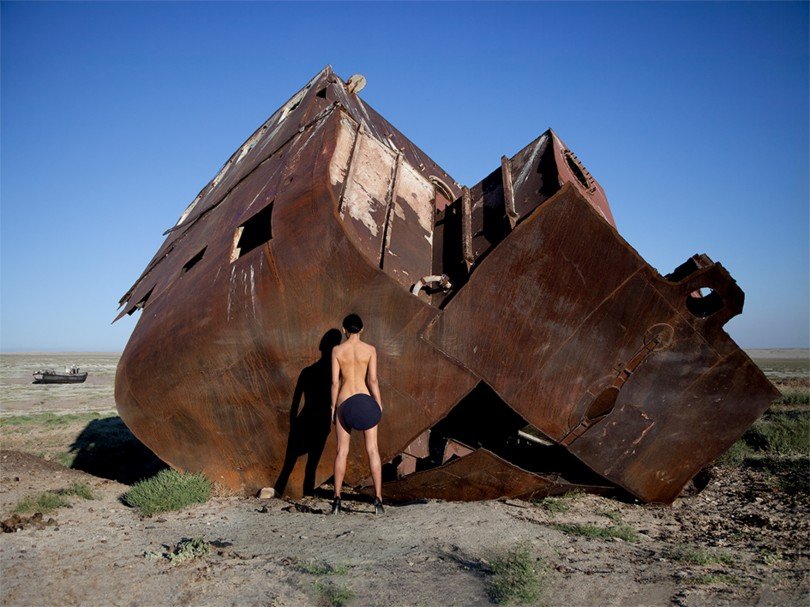
sTransoxiana Dreams by Almagul Menlibayeva
By Uzbekistan’s and Kazakhstan’s border sits a large body of sands filled with mounts of seashells and rusty abandoned sea ships that stay there are as remnant relics of abundant once the Aral Sea. These are artist's photographic imaginings of the ecological catastrophe that has occurred to the region.
The sea disappeared due to highly inefficient irrigation system with excessive resource exploitation during Soviet times and environmental warnings were ignored. Moreover, the bountiful Aral Sea became a testing site for the most carcinogenic bioweapons of the Soviet military. Failing to maintain infrastructure and the immense emissions of pollutants had a severe effect on people living in the area. The situation complicated by the fall of the Soviet Union in 1991, creating separate countries with different water policies.
Series of photographs are based on the video work which was filmed the dried-up coastline in a surreal state of existence with discarded fishing fleets on dusty terrain, split by metal scavengers. It tells an eccentric story of fisherman’s daughter, who witnesses the dramatic changes to the landscape of the once-thriving region and its indigenous people. Now the seabed is filled with mythological creatures half-humans, half-soldiers, half-centaurs. The film is narrated by a little girl who believes that one day the water will come back.
The interchanging contrast between documentary and mythological journey to the sea, discusses the greatest human-made catastrophe. It is a tribute to the nomadic history of Kazakhstan and gives an impression of the ongoing traditions of the hybrid culture and disintegration.
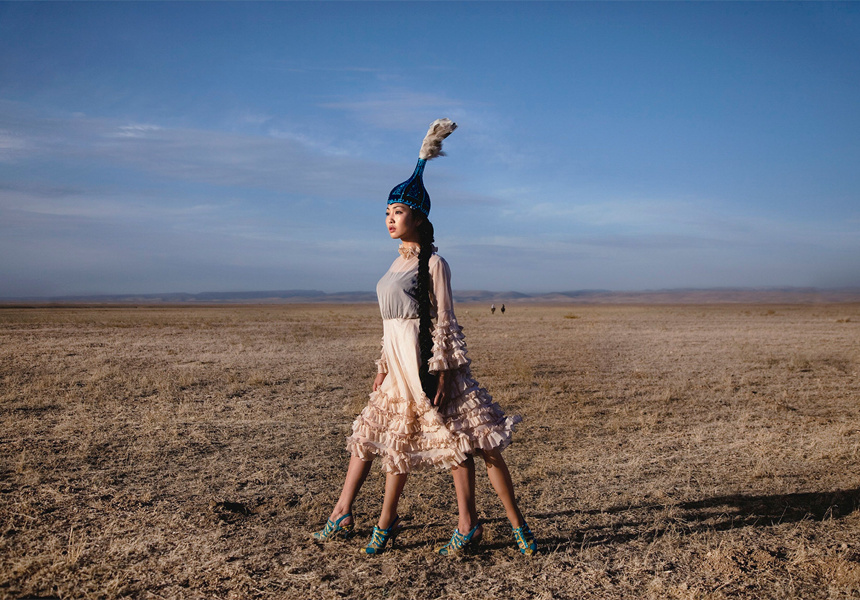
time update: we apologise for the confusion, given how we all inhabit different time zones we made a mistake!
the event will start at 5pm (gmt)
see you all soon from wherever time you are coming from!
watch arranged residues here
https://vimeo.com/user118686814
Distinction between harmful and pleasant sounds in the city setting is an agreed norm. Regulations on allowed noise levels are reasonably strict, however, this is not the case in aquatic context. The underwater was once considered silent, which with rise in technological advancements has been debunked. We are much more aware of the music of the depths - the cacophony of sounds that informs the marine life about their surroundings, and yet it is often seen as alien or inaccessible, although both point to a depth outside and within.These sounds are rarely even heard by many, they do not share popular dissemination, aside from perhaps the trope of whale song or the boop of radar.
"sonic way of knowing and being in the world"
Stefan Helmreich
what does it mean to be a body of water?
how does that obligate me differently to the other bodies of water with whom I share this planet, both human but, of course, also hydrological bodies?
Astrida Neimanis, 'The sea and the breathing'
>>>this website is not compatible with certain browsers, please use firefox or chrome to see the entire content<<<
>>back to main page<<
>>back to main page<<
>>back to main page<<